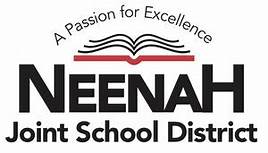Community Engagement Sessions Plan for the Future of Neenah Schools

November 4, 2019
The N.J.S.D. Administration building displays classroom-like offices and a floor that replicates a gymnasium. Built in 1907, Kimberly High School was one of the first in the district to undergo a referendum. In the 1920s, the district decided to build a new high school south of Division street, which is now Shattuck Middle School. Over the years, the building went through renovations and ultimately became the middle school as a new building was built. This, too, went through a referendum, and renovations and new buildings were built.
It is no doubt that another referendum was going to arise; this one came with controversy.
After the referendum failed in April 2019, Dr. Mary Pfeiffer, superintendent of N.J.S.D., wanted to try again. First, the Board of Education held a meeting and discussed what went wrong. One of the main things that came out of that meeting was the involvement of the community was not as strong as it could have been. They decided to hold community engagement sessions.
Roughly 300 people attended the sessions, which Pfeiffer felt was an outstanding number. She explained that when something fails, it is important to step back and reflect on what could have gone differently. Within those conversations, the Board of Education felt that the community can help them.
Dr. Pfeiffer experienced first hand the effect of these community engagement sessions. She described them as meetings where they described, provided visuals, and discussed the six potential pathways that the district could take.
She said: “I think they were really surprised that the engagement sessions were really not for them to just listen. but for them to work . . . we were able to have conversations with them and engage with our community.”
With a mix of former students, parents, and people living in the Neenah community, it was exactly what the Board of Education wanted to see.
Jim Strick, communications manager, was involved in the engagement sessions. He explained that when the last referendum failed, one of the main points of feedback the Board of Education received was that the plans did not incorporate long-term master plans for the District, which is why they decided to incorporate “pathways,” which are long-term plans that will be implemented in phases.
Through the four engagement sessions, they discussed six pathways that the board felt were viable options, and they wanted community feedback. Though pathways #2 and #5 are the most popular among the community, the engagement sessions revealed the advantages and concerns for each.
On the Neenah Joint School District page, they display each pathways along with the advantages and disadvantages.
Pathway #2 holds potential for a cost-effective change — rebuilding Shattuck instead of renovating only to update the building in the near future. Clearly, the feedback of disadvantages cannot be ignored — not only will it be expensive, but the cost may be completely underestimated, leading to a taxpayer’s nightmare.
Pathway #5 is beneficial because land that is already owned will be put to good use, and parking will be improved at the new high school. The disadvantages include the fact that there will be 2100 kids in this new middle school ranging from 5th to 8th graders, and putting young kids on such a giant campus may prove difficult.
In the coming days, the Board of Education will be sending out a survey to the community where they will analyze how people feel about the two favorable pathways. In the survey from last year, roughly 17 percent of the population took it. Although it is statistically viable, the Board of Education did not feel like it was enough. This time around, they sent a notice to houses saying that the survey is coming and are encouraging people to take it.
With that information, the Board of Education will move forward with its Roadmap to Excellence and potentially hold more sessions in the future.

